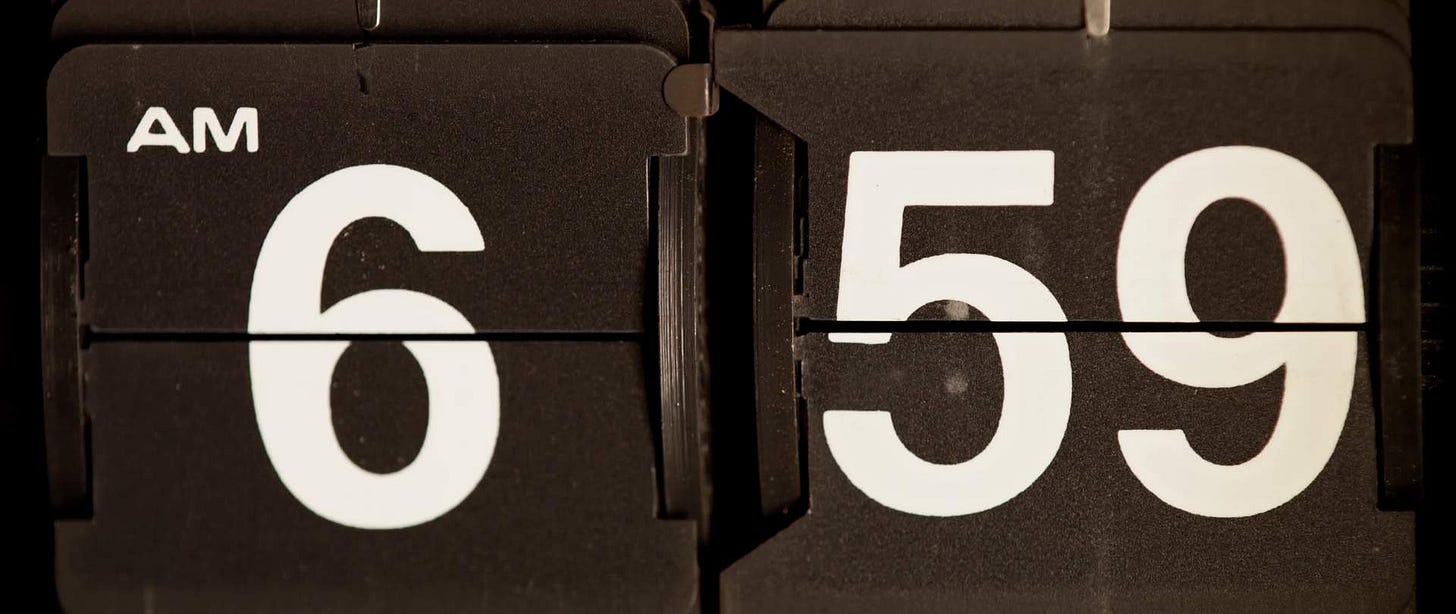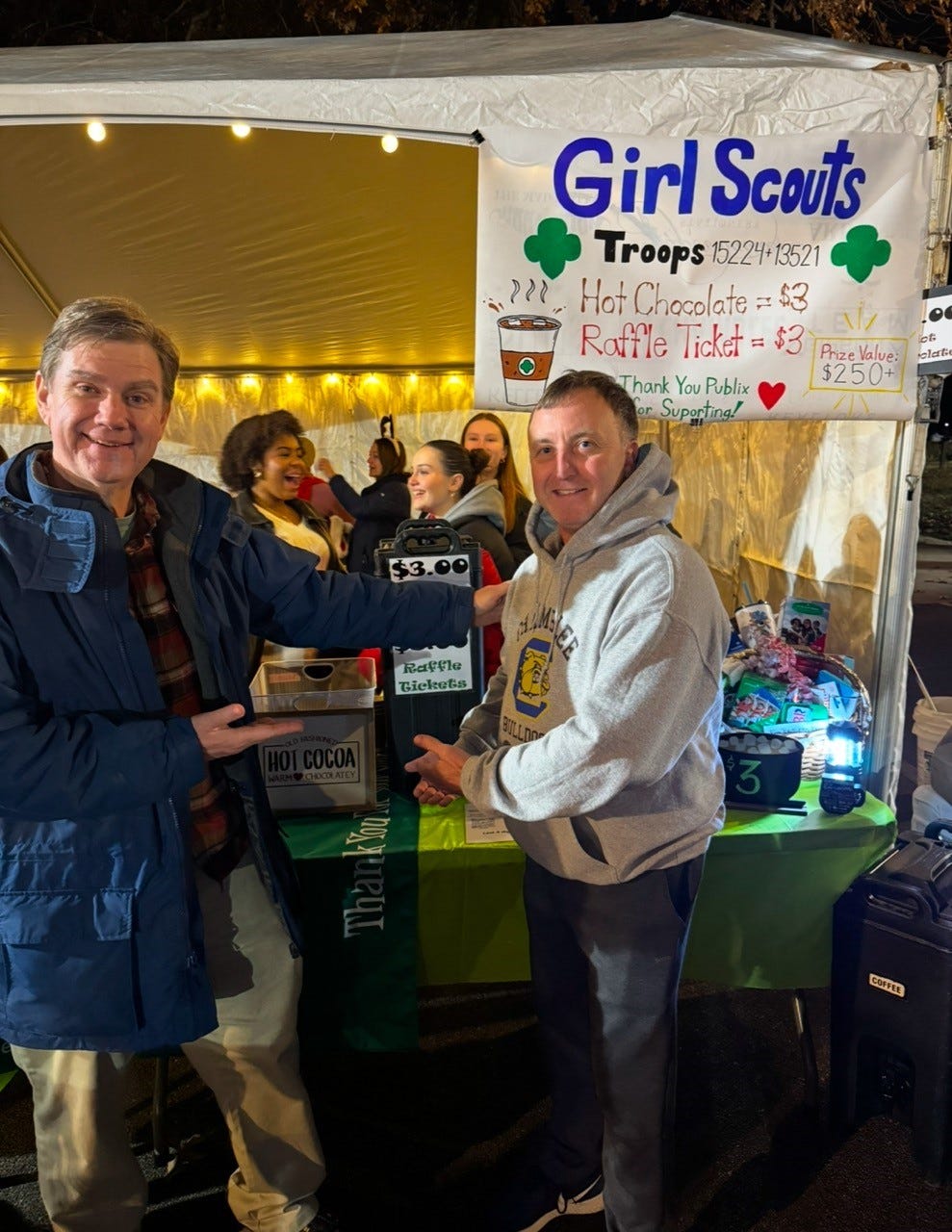December 10, 2024 - Pennons, Early Rising, Selling Out, Creep
This week we wake up early to learn about a unique flag, savor one last cup of cocoa and enjoy a music video about a slow landslide.
Nuggets of Information: I Think I’m Going to Katmandu
There are 195 nations in our world, and 194 of these nations have rectangular flags. Any idea what the one nation is that does not have a rectangular flag? Need hints?
They have the world’s tallest mountain
A guy named Buddha was born there
You can rearrange the letters in their name and spell: PENAL, PANEL, PLANE and PLENA
Did you guess Tibet? If so, you only focused on the mountain hint. The actual answer is: Nepal!
The Nepali flag is a double pennon flag, featuring two crimson-colored rightward-pointing isosceles triangles, decorated with a navy blue border and two white shapes that represent the sun (on the lower half) and the moon (on the upper one).
The crimson red symbolizes bravery or the rhododendron, Nepal's national flower - there is a debate about that. The deep navy blue represents peace. The sun and moon represent the hope that Nepal will endure as long as the sun and moon.
Documentation on this flag goes back to the mid 1800’s, but the official characteristics of the flag were developed after King Mahendra asked a mathematician to develop precise specifications for the size, shape and design of the flag. Those specifications are enshrined in Nepal’s constitution.
I know I don’t have to tell you, educated newsletter reader, that the correct name for the people of Nepal are Nepali, not Nepalese, but in case you leave a copy of this on the printer, and someone else picks it up, they will now know. And if that someone happens to be Bob Seger, he should know that the correct spelling is “Kathmandu.”
We encourage any of our Nepali readers to share pictures of their great flag in the comments!
Enrichment: Just A Few Minutes More
If you set an alarm to wake up at the same time every day, you may notice that over time, you wake up a minute or so before your alarm goes off. This happens to me, and I feel ripped off. I did everything I was supposed to: brushed teeth, washed face, applied nighttime moisturizer, gave thanks to Phema, the Greek personified spirit of rumor, report, gossip and newsletters, and went to sleep on time. But then I wake up before my alarm, missing out on 1-2 minutes of restorative dream work-shopping? Not cool.
For a while I theorized this was due to environmental cues outside triggering the wake-up process. Maybe the sun and birds are up a minute earlier than the day before - sort of like what I wrote about in my article that discussed sidereal time. But that would only explain the phenomenon from Dec 21 - June 20, as sunrise comes a little earlier each day. So that theory doesn’t hold up.
What actually is happening involves our body's internal clock - the suprachiasmatic nucleus, which controls our sleep-wake cycle. A protein called PER plays a crucial role in regulating this cycle. By following a consistent sleep schedule, our body learns to increase PER levels just before our alarm goes off, leading us to wake up naturally. This can help avoid the stress associated with sudden awakenings.
Next time you wake up a minute before your alarm, thank your internal clock for wanting to ease you into your day.
Workshop: Last Call for Hot Chocolate
Last week I wrote about our preparations for our annual Girl Scout Hot Chocolate Booth at the Light Up Brookhaven holiday event. The booth was a big hit, with over 25 gallons of hot chocolate sold, the wonderful gift basket raffled off, and Boo’s N.E.W.S. subscriber Marc Rutherford mentioning the newsletter to win free hot chocolate. (Disclaimer: Marc did not collect his hot chocolate, as he had just eaten a big meal at Los Bravos, our local Mexican restaurant.)
Speaking of Los Bravos, they filled our large cambros with hot water and lent us an industrial spoon to mix up the H-C goodness. Special thanks to Los Bravos and all the sponsors and volunteers who helped make this event such a big success.
My favorite part was watching Lisa work the event - a big smile on her face, engaged and excited. I alone knew just how tired she was, how much she had worked that week, and that she had another function to go to that night. But she was happy, and that made all the work worthwhile.
Selected Content: But I’m a Creep...
Boo’s N.E.W.S. Geology and Natural Sciences reporter Samantha Booher recently shared with us an awesome video she made about creep, a fascinating geological process involving the slow, continuous movement of soil or rock downhill. It's like a very slow landslide, often imperceptible to the naked eye. Signs of creep include tilted fences or poles, curved tree trunks, tilted gravestones and small ripples in the soil. Unlike sudden events like landslides or earthquakes, creep occurs gradually over time.
While both creep and mudslides involve the movement of soil downhill, there is one big difference: velocity. Mudslides are rapid events that can cause significant damage, while creep is a much slower process. Additionally, mudslides often occur after heavy rainfall or other triggers, whereas creep is primarily influenced by gravity and the properties of the soil or rock.
To learn more, please check out Samantha’s video, with the catchy title “Mass Wasting Geology 1103 Extra Credit.” It is an educational parody based on the Sabrina Carpenter hit “Please, Please, Please.” Come on Boo’s N.E.W.S. readers - let’s make this thing go viral!










Note: Vatican City and Switzerland have square flags. So, rectilinear, but not rectangular.
Creep is also a materials science phenomenon. Materials subject to persistent stress even well below their yield strength can experience creep, whereby the atoms slowly "flow" in response to the stress and the material deforms accordingly. This is especially prevalent at elevated temperatures, when atomic mobility is increased. It is the dominant engineering concern with jet turbine blades, which experience high temperatures and tremendous centrifugal forces from spinning at tens of thousands of RPM.